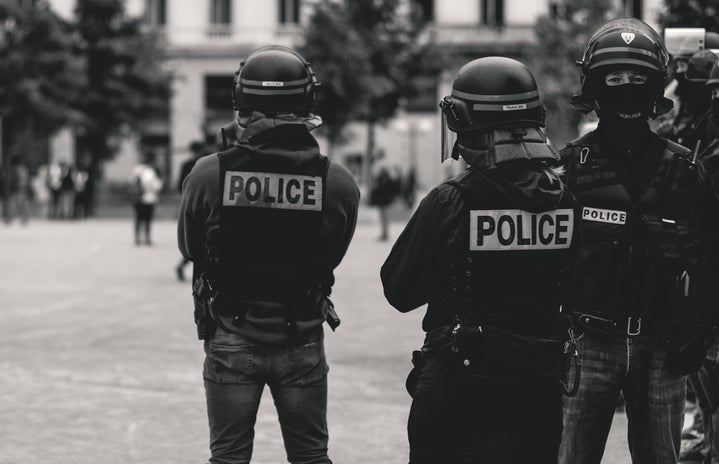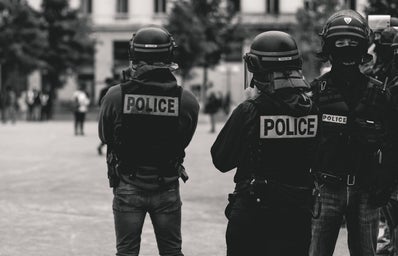If you watched the Nevada Democratic Caucus debate, or even if you didn’t, you probably heard about Michael Bloomberg’s disastrous performance. The odds are good you’ve seen a Bloomberg ad or two on TV. His entry into the presidential race was making news for his absolutely insane campaign budget, much of which is borrowed from his own $70 million fortune.
Bloomberg made this money from his media company, Bloomberg Media, before entering politics in 2002 as the Republican mayor of New York City. He served three terms in that role. Some of his major policy initiatives include taxing restaurants that served soft drinks over 16 oz. in an effort to improve public health, partnering with the CIA to surveil Muslims in NYC and stop-and-frisk. The latter is the one critics of Bloomberg have focused on, claiming that the policy left a legacy of racism on NYC. Keep reading for a breakdown of the original policy and how it could impact Bloomberg’s presidential campaign.
What is stop-and-frisk?
Stop-and-frisk is the name of a policy implemented in New York City under Bloomberg’s mayorship. Essentially, police can stop any person that they suspect may be committing a crime and frisk that person to see what they are carrying. This meant that anytime you were walking down the street, regardless of who you were, police could physically search your entire person. Unsurprisingly, police mainly targeted young black and Latino men. In 2015, Bloomberg explained his reasoning for this racial disparity, saying “Ninety-five percent of your murders — murderers and murder victims — fit one M.O. You can just take the description, Xerox it and pass it out to all the cops. They are male, minorities, 16 to 25.”
What was stop-and-frisk intended to do?
The intent was to take a no-bullshit approach to criminal justice–a popular political sentiment in the 1990s and early 2000s, when politicians across the political spectrum supported tough-on-crime legislation in response to high drug crime rates. The argument for the policy was that it reduced crime in NYC, which is untrue. The NYC crime rate peaked in the 1970s and 1980s, falling in the 1990s and continuing to fall today. This decrease in crime can be seen across the country. After stop-and-frisk ended in 2016, crime rates continued to fall in NYC, proving that the policy had little to do with public safety. The policy also didn’t help end shootings in NYC: police only found guns on the suspect 0.02% of the time.
The legacy of stop-and-frisk on minority neighborhoods
Black and Hispanic New Yorkers make up just 52% of the city’s population, yet made up more than 80% of those stopped-and-frisked by police. For most years of the policy, nearly 90% of those stopped were innocent. Without making you do a complex equation, it’s clear that stop-and-frisk targeted young men of color with little cause other than their race.
It’s pretty obvious, then, how these young men quickly associated the police with racism. Stop-and-frisk both worsened the already fraught relationship between communities of color and police. Police were also given license to assume any person of color they saw was a criminal, leading to worse outcomes for New Yorkers of color and likely increasing police violence towards these communities. However, the legacy of this policy goes beyond its immediate consequences. According to a recent study, stop-and-frisk coincides with an increase in black students dropping out of school–particularly middle school, in areas of NYC with higher rates of stop-and-frisk. Because of this policy, a percentage of young men of color in one of America’s largest cities will be fundamentally disadvantaged for the rest of their lives, with multigenerational consequences for black and Latino communities.
What stop-and-frisk could mean for Bloomberg’s candidacy
Bloomberg seems to view himself as the true victim of stop-and-frisk, claiming that he’s moved past it and that his views have changed. He has not, however, apologized for the effects of the policy on the millions of New Yorkers it affected. Bloomberg, as the most centrist candidate in the Democratic primary, is looking to black voters for support in important states such as Florida, Texas, South Carolina, New York and the Upper Midwest. Without the support of moderate black voters, his candidacy has little chance of gaining any real base–and it’s up to the communities of color in the Democratic Party to decide if it’s worth giving Bloomberg a second chance. Bloomberg’s judgement on the issue of criminal justice as mayor of NYC speaks to how he may use the criminal justice system as president.
In a party that is increasingly wary of the criminal justice system and the way it has systematically targeted minorities for decades, Bloomberg is an outlier. The legacy he left on New York City is complex, but this policy could define his legacy as a politician.


